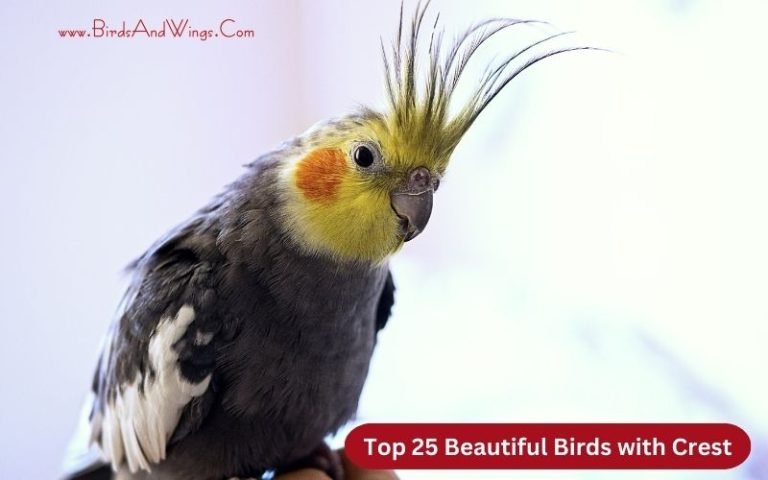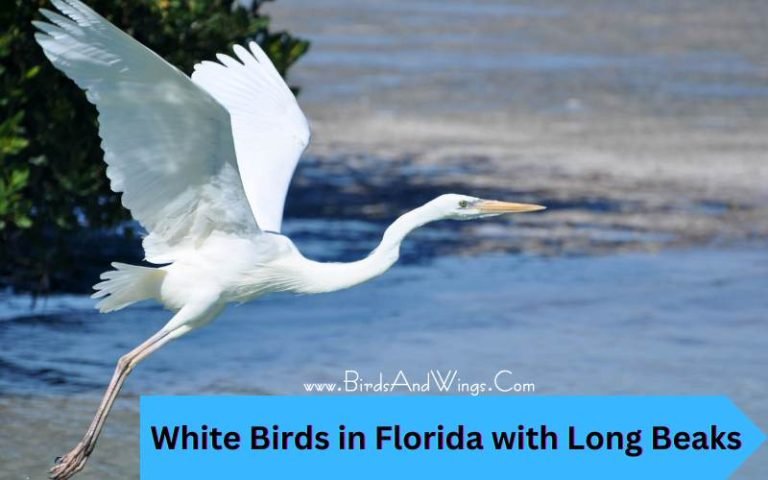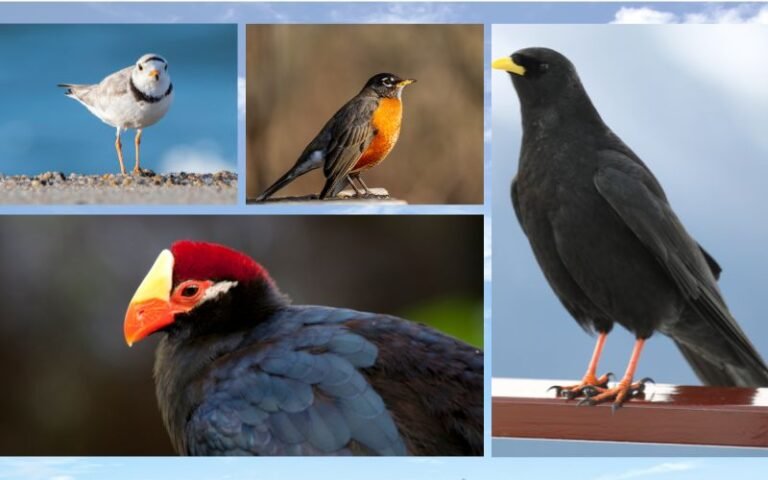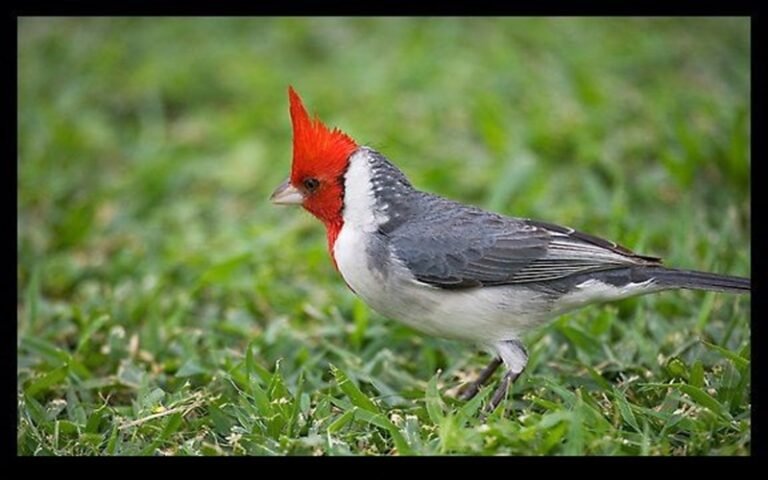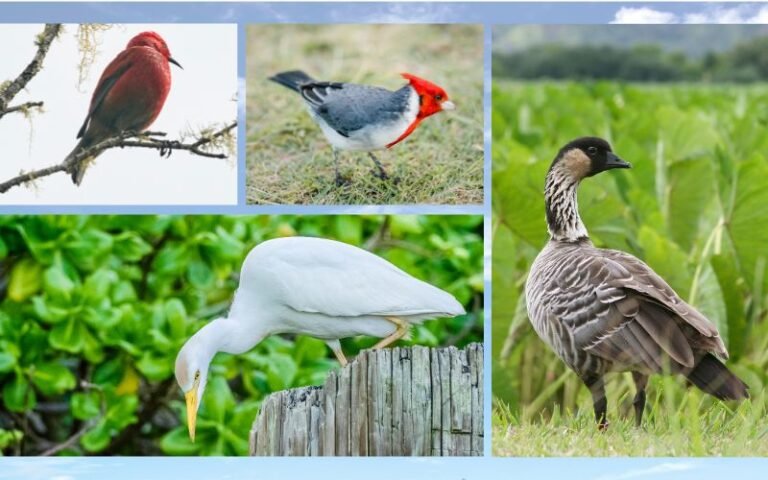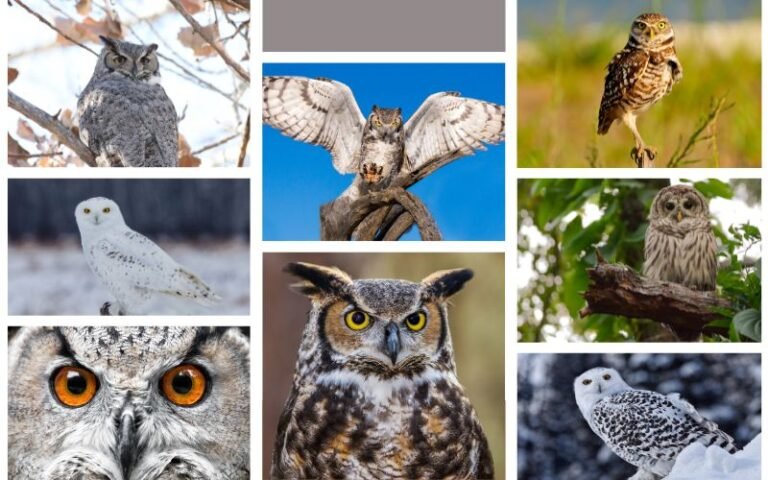11 Species Of Hawk In Maryland
Maryland is located in the mid-Atlantic region of the United States. It has an abundant collection of hawks and birds of prey.
Different types of hawk species have been spotted in the Maryland border, which provides suitable temperatures, migratory seasons, and food sources for them.
In this article, we will examine the top 11 species of hawks in Maryland and discuss their scientific names, lifespans, native places, sizes, Wingspans, diets, and other facts about them in detail.
So, let’s broadly explore their diversity in Maryland.
11 Species of Hawk in Maryland
The Maryland border is filled with various hawk species because of its suitable environment and adequate nature for these species.
This section will discuss their physical characteristics, geographic distribution, habitat preferences, and other behaviors, along with their scientific names, lifespan, native place, size, wingspan, and diets.
Bird 1: Osprey

- Scientific name: Pandion haliaetus
- Lifespan: 7- 10 years
- Wingspan: 127–180 cm (50–71 in)
- Native to: north america, gulf coast, Florida, Alaska; except Antarctica
- Size: 50–66 cm (20–26 in)
- Food or Diet: prime food: fish; also eat rodents, frogs, birds, hares, rabbits, mammals, snakes etc.
Osprey hawks are also known as sea hawks, river hawks, or fish hawks, which are famous for birds of prey. The lower parts of the bodies are deep, glossy brown, white breasts.
Their head is white with a dark brown patch across the eyes. Their eyes are golden to brown, and they have black bills. They have short tails and narrow wings that look like finger-feathered.
These osprey hawks are mostly common in tropical regions such as North America, Alaska, Newfoundland, the Gulf Coast, Florida, and Finland. They are also common in every region except Antarctica.
They build their nests near watery places, which are their best habitats. They build their nests with large heap sticks, driftwood, turf, tree forks, rocky outcrops, etc.
These osprey birds generally choose their mate for their whole life, which means they like to be with their one partner for their whole life until and unless their partner is dead. Then they go for new mates.
Their breeding season varies across the region. In southern Australia, it starts in September to October. It starts between April and May in northern Australia, and in southern Queensland, it starts around June to August.
After their breeding seasons, female ospreys lay 2-4 eggs in the nests and raise their young there.
Bird 2: Sharp-Shinned Hawk

- Scientific name: Accipiter striatus
- Lifespan: average 3-5; individual 13 years
- Wingspan: 42 to 58 cm (17 to 23 in)
- Native to: America, the United States, Canada
- Size: 23 to 30 cm (9.1 to 11.8 in)
- Food or Diet: Birds like songbirds, sparrows, wood-warblers, finches, and thrushes, as well as lizards, snakes, frogs, insects, and rodents.
Sharp-shinned hawks are small hawks, also known as northern hawks. Adult hawks are covered with brown and black plumage. Their wings, head, and forehead are black, and their cheeks and breasts are brownish-white with orange Irish.
They also have short wings and medium-sized tails. They have long yellow legs with black beaks. These species of hawk are widely common in North America, Central America, and South America, including the United States and Canada.
These hawks prefer woodlands and forest-type areas for their habitats. They kill or catch their prey from dense vegetation while flying quickly. These sharp-shinned hawks can fly up to 300-3000 m ( 980- 9840 ft) above the sea surface.
Their primary diet contains birds like songbirds, sparrows, wood warblers, wrens, thrushes, and finches. They also consume lizards, rodents, hares, frogs, snakes, large insects, and bats.
These species build their nests with sticks in deciduous or dense forests. During their breeding season, male hawks defend their nests and territory, bringing food for their partners, while female hawks incubate the eggs.
Bird 3: Cooper’s Hawk

- Scientific name: Accipiter cooperii
- Lifespan: up to 8 years
- Wingspan: 84 cm (33 in)
- Native to: North America
- Size: 35-46 cm
- Food or Diet: small birds, mammals, bats, mice, squirrels, chipmunks, reptiles and insects
Cooper’s hawks are medium-sized hawks widely spotted in North American continents. Their breeding regions cover Canada to northern Mexico.
They prefer deciduous forests and mixed forests, especially foothills and mountainous regions, conifer forests, woodlands, farmlands, and floodplains for their habitats.
Adult hawks have gray and reddish plumage on their body with long gray tails and black banding; tails have white features on the edges. Their face is pale with a black cap and red Irish.
Their hooked bills are yellowish-black and strong enough to tear prey’s flesh within a minute. Cooper’s hawks can make 40 different voices and variations during their breeding seasons.
Male hawks’ voices are harsher and louder than female hawks’. They have special techniques for hunting their prey. If they see birds flying across the trees, Cooper’s hawks do not go directly to hunt them; rather, they circle around the whole area and bushes and then attack their prey.
Bird 4: Northern Goshawk

- Scientific name: Accipiter gentilis
- Lifespan: about 11 years
- Wingspan: around 43 to 50 inches (108 to 127 centimeters)
- Native to: North America
- Size: 18 to 25 inches
- Food or diet: small birds including reptiles, snakes, lizards, frogs, rodents
Northern goshawks are divided into two categories: Eurasian and American. Both species are native to North America, including Europe, Asia, Spain, France, Great Britain, Morocco, Tibet, the Himalayas, and Oklahoma.
Eurasian and American goshawks both prefer wooded areas, hardwood forests, and forests with certain trees for their habitats. These hawks become more vocal during their courtship days and produce repetitive sounds.
Their breeding season starts around March and April. During incubation days, male birds go outside to find food for their mothers.
These species also become bold and aggressive; sometimes, female birds get extremely aggressive if male birds do not bring food during the courtship period; they get killed by female partners.
They can use their nests for several years. After hatching, male hawks come and give inconsistent food for 3 to 5 days or periods. Later, female birds feed the young.
Bird 5: Red-Tailed Hawk

- Scientific name: Buteo jamaicensis
- Lifespan: around 10 to 12 years
- Wingspan: about 110–141 centimeters (3 ft 7 inches – 4 ft 8 inches)
- Native to: North America
- Size: 18 to 24 inches
- Food and diet: small animals, rodents, lagomorphs, reptiles, fish, invertebrates, lizards, mouse
Red-tailed hawks are highly distributed and common in North America. They have brownish-black plumage and a reddish-brown tail.
Their wings are 105 to 141 cm wide, which allows them to fly effortlessly in the sky in a flight position. During their flight, these hawks often soar and flap their wings, which also helps them conserve energy.
These hawk birds are mostly partial migrants, which means they travel within their range, including Canada and Alaska. These species prefer mixed forests, fields, woodlands, tall trees, or high bluffs for their habitats and also for their nesting and perching places.
They inhabit wetlands, mountains, grasslands, and agricultural fields. As birds of prey, they hunt and consume their food.
Their diet includes small mammals, fish, birds, reptiles, snakes, rodents, mice, and lizards. Their breeding season starts in late February and lasts until December.
During their courtship performance, they dangle their legs, touch each other’s wings, or do cartwheels together.
Bird 6: Red-Shouldered Hawk

- Scientific name: Buteo lineatus
- Lifespan: around 20 years
- Wingspan : around 90 to 127 cm (35 to 50 inches)
- Native to: North America, California, Mexico
- Size: 15 to 23 inches
- Food and diet: small mammals, rodents, voles, gophers, mice, moles, chipmunks, reptiles, snakes, birds and insects
Red-shouldered hawks are medium-sized hawks that are widely spotted in North America, California, and Northeastern central Mexico, including Florida and the Gulf Coast.
These species have brownish heads and reddish lower parts, with a dark brown and white pattern in the wings. In winter, these red-shouldered hawks migrate from Okaloosa, Ohio, to the Gulf Coast for breeding purposes. Their preferred inhabitants are woodlands, hardwood stands, and open subcanny.
They are rarely found in deep forest areas. During their breeding seasons, these hawks prefer mixed wooded areas near watery places.
Their mating or breeding season starts between April and July. Hawks build their nests with sticks, bark, leaves, etc. They usually repeat their nests for several years with the same mating partners.
During mating, hawks produce harsh sounds to protect their nests and territories. Female hawks lay eggs and incubate for 28 to 33 days. After hatching, the young start to leave their nests around six weeks ahead.
Bird 7: Broad-Winged Hawk

- Scientific name: Buteo platypterus
- Lifespan: around 12 years
- Wingspan: around 74 to 100 centimeters (29 inches to 39 inches)
- Native to: North America
- Size: 32 to 44 cm (13 to 17 in)
- Food and diet: insects, amphibians, reptiles, mammals, mice, rabbits, small birds, etc.
Broad-winged hawks generally have the board wingspan among other species of the hawk family. Their wings are about 74 to 100 cm, which helps them fly and glide effortlessly without using much energy.
These species’ upper body parts have dark brown plumage, and the lower parts of the belly and breasts are speckled with a whitish-brown color. They have yellow Irish and yellow legs.
These broad-winged hawks are largely distributed in North America, South America, Canada, British Columbia, and Texas. In the winter season, they migrate to Florida, Mexico, and Northern South America.
Their breeding areas include the northern and Eastern parts of North America. These hawks migrate or travel with groups of 40 birds. Sometimes they even migrate in flocks with thousands of birds at 550-1300 m heights from the Oceans.
These species of hawks use their vocal sounds to communicate with their fellow members of the groups or pairs. Male hawks perform courtship rituals such as cartwheels, dives, and aerial acrobatics to attract mating partners.
These broad-winged hawks can survive without water for several days. If they cannot find drinking water, they can survive by consuming their prey’s water from their bodies.
Bird 8: Rough-Legged Buzzard

- Scientific name: Buteo lagopus
- Lifespan: around 19 years in the wild
- Wingspan: around 120 to 153 centimeters (47 inches to 60 inches)
- Native to: North America, Europe, Russia
- Size: 18 to 27 inches
- Food and diet: Small mammals, insects, reptiles, rabbits, mice, rats, gerbils, pikas, shrews, squirrels etc.
Rough-legged buzzards, also known as rough-legged hawks or rough-legged falcons, are medium-sized hawks mostly common in North America’s Arctic and subarctic regions.
Their whole bodies are covered in brown and white plumage, and their beaks are black. In winter, these rough-legged hawk species migrate to or travel to southern Europe and Asia.
Their breeding areas are usually open places or open ground between April and May. These hawk birds also produce sounds when they sense intruders or predators around their nesting sites.
During the winter season, these hawks travel to marshes and agricultural places, mostly to search for food. In the fields, they attack and kill rodents, too.
These species of hawks are notified as aggressive nature birds among other hawk species for their aggressive attacks on their prey and defending territories aggressively.
These species are loyal to their partners and choose one mating partner for several years.
Bird 9: Northern Harrier

- Scientific name: Circus hudsonius
- Lifespan: around 16 years
- Wingspan: around 32.8 to 40.6 centimeters (12.9 inches-16.0 inches)
- Native to: Northern hemisphere in Canada, northernmost USA
- Size: 41–52 cm (16–20 in)
- Food and diet: songbirds, small rabbits, doves, insects, reptiles, snakes, lizards, etc.
Northern Harriers, also known as marsh hawks or ring-tailed hawks, are birds of prey that are widely spotted in northern parts of the northern hemisphere, Canada, and the northernmost USA.
These species have brownish-black bodies and white collar rings around their neck. These harriers are familiar in the United States of America, mostly in the North side, Mexico, and Central America.
In the winter season, they travel to the southern US. These species are fond of open areas, marshes, and woodlands for their habitats.
These species of hawks do not remain with one mate; on the contrary, they have been spotted to change their mates up to 5 five times in one single breeding season. Female hawks build their nests with grass, sticks, and leaves on the ground level or in dirt or vegetation.
Female hawks lay 4 to 8 eggs in the nests and incubate for 31 to 32 days. The male hawks feed the young after their hatching. Later, the child will leave the nest at around 36 days of hatching.
Conclusion
In conclusion, all these species are widely spotted in the Maryland border because of their geographical location and perfect suitable breeding and mating places for hawk birds.
Besides, this land also provides them with enough sources of food and nutrition, and prey to hunt them. Likewise, Oklahoma is recognized as a home and suitable place for hawk species to live. All these places provide an adaptable environment for hawks to live and breed.


